Day 2
Target locations for day 2 were a culvert, Padley Gorge and the power station cooling towers at Ratcliffe-on-Soar near Derby on the way home.
As it turned out, we did four locations…
Culvert
What is a culvert?
A culvert is a structure that channels water past an obstacle or to a subterranean waterway. Typically embedded so as to be surrounded by soil, a culvert may be made from a pipe, reinforced concrete or other material. In the United Kingdom, the word can also be used for a longer artificially buried watercourse.
Pat had this on his list and once we found the location, we had to walk through a wood and up a slippery bank to get close to the tunnel.
We made our way into the tunnel to start capturing an amazing waterfall scene. However, there was a penalty. Clearly the water tumbling down contains sewage as it absolutely stank! 🤢

Upon turning around, there was a good shot to be had of the tunnel, running water and woodland out the end.
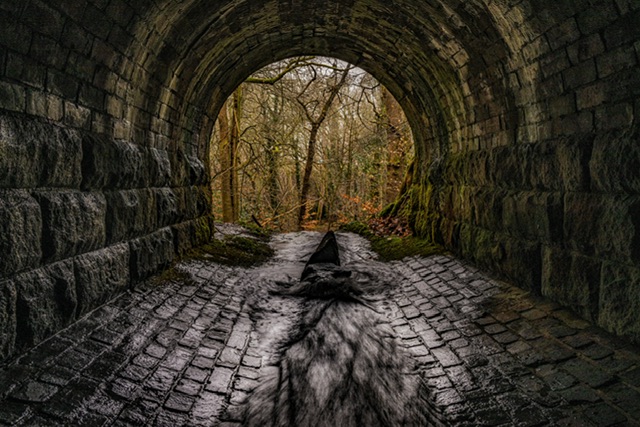
We spent quite a while getting the shots we wanted before carefully making our way out.
Pat enouraged me to take this shot below of the view from outside looking into the tunnel, and he helped me refine my composition.
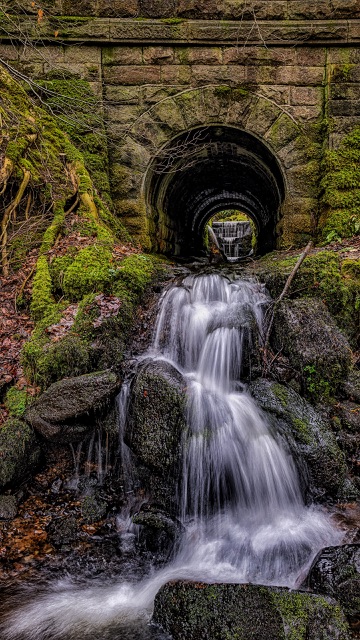
We had finished our shoot here, and it was time to get out of this stinky location.
We made our way across the stream, through the woods and back to the car.
With a most enjoyable but challenging shoot, we moved on to our next location.
Padley Gorge
We made our way to Grindleford and Padley Gorge.
A short walk from the train station car park, and you’re making your way in to the woodland via a small gap in the wall.
With trees, running water and the famous millstones, there’s plenty to see and photograph at Padley Gorge, which is why it’s a honeypot location for photographers.
We wandered up through wood and stopped a little way up past the bridge, and I grabbed the shot below, trying to catch the potential for swirling water at the bottom right of the scene.
It was really challenging because to slow the shutter down for longer meant trying to control the brightness of the water.
I had several filters and a graduated ND filter at an odd angle, but I’m pleased with the shot I captured.
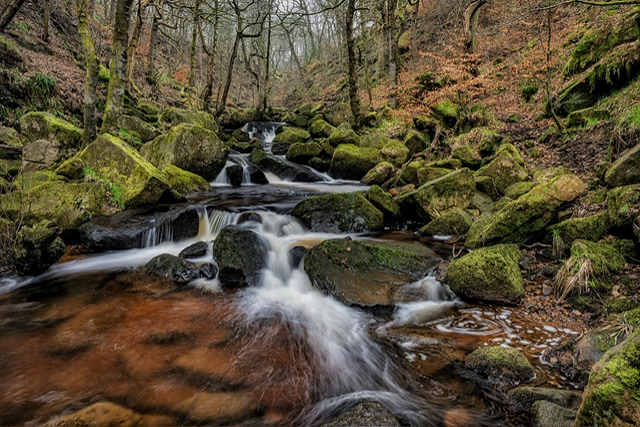
Pat made his way to the other side of the stream and I moved to my right to capture a different composition.
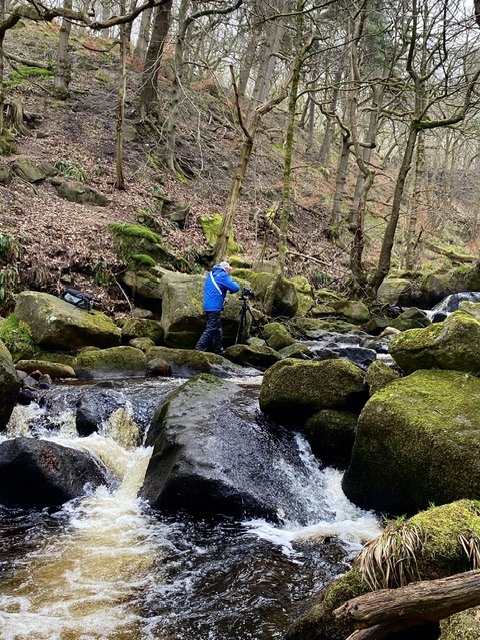
Pat then made his way back over to talk to me, and I asked if I’d seen him slip down the bank opposite.
I hadn’t seen him do that, and he said it wasn’t great but he was OK, but he had lost his bag’s rain cover, the very same one that he almost lost on Parkhouse Hill!
This time it was not easily retrievable, and he was content to leave it there.
As I was trying different shots with varying shutter speeds, one of those graduated ND filters slipped out from the magnetic holder and into the water.
I looked down and could see it on the bottom of the stream and reaching in to get it, I realised I was just more than an arm’s length!
I took my coat off, rolled up my shirt sleeve and retrieved the filter – lifting it up, I could see several scratches and knew straight away it was ruined.
This filter already had one small scratch from months ago, but not enough to warrant a replacement but now it definitely needs replacing. Being a double ended grad, it’s cost me £218!

Dippers
I was feeling tired and had reached a feeling of not wanting to shoot anymore at this location. Pat went to find another waterfall shot, and pointed out some birds flying by us at pace.
The birds had a yellow colouring and I wasn’t sure what they were – looking them up back home, and with Kathryn making a perfect guess, they were grey wagtails.
I fiddled around changing lenses and settings and the pair of wagtails had gone upstream.
I waited a while then some dippers appeared and I grabbed some shots as they hopped onto the rocks above the stream.
I confess I was most definitely applying a lazy “spray and pray” technique of shooting at 20 frames a second.
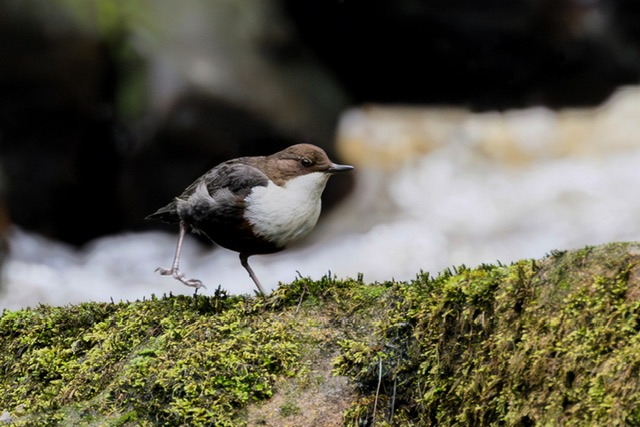
We met up and both felt tired and that we’d done enough at this location.
Pat suggested some sustenance at the cafe back at the train station, so we headed there.
The cafe had been highly recommended by another photographer we had been chatting to, and it did not disappoint!
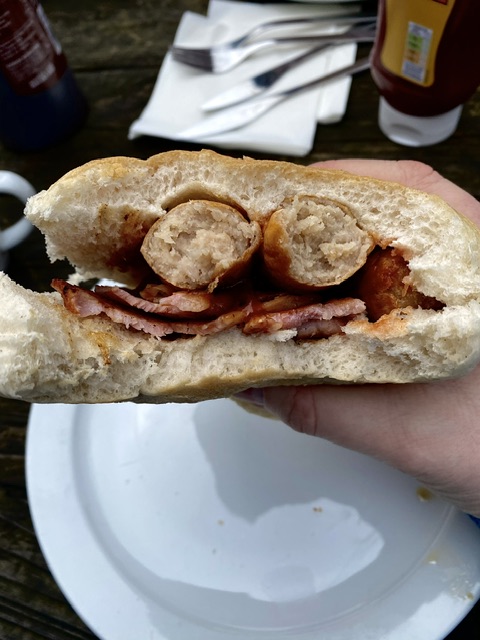
Ladybower Reservoir Plugholes
We were on our way out of the Peak District when Pat suggested we consider a trip to Ladybower. I was up for it, so we double backed and headed up there.
Our target was of course the famous plug holes.
About the plug holes
Technically known as shaft spillways but affectionately known as plug holes, the drains were designed to regulate water levels in the reservoir by letting out water when the reservoir became full after prolonged wet spells.
The water is carried away down tunnels through the dam to the River Derwent downstream.
Each plug hole has a diameter of 24m (78ft) and the drop from the exit point to the floor of the tunnel below is 20m (66ft).
Capturing the plug holes
There is very limited roadside parking nearby so we headed to the car park and managed to get a space. A short walk from there to the first viewing point led us to the first plug hole. What a sight it is!
I haven’t seen the Plugholes for quite a few years – the last time was when Kathryn and I were on holiday here but there was no flowing water, and it was disappointing.
On this occasion however, the plug hole had plenty of water flowing in and it was impressive to witness. There is a half circle viewing spot which is quite small so it was a little awkward to set up our tripods without hindering the many passing onlookers.
We did a few photos here but there was a lot of clutter in the foreground, and incredibly bright sunlight on the left of the scene. I found myself trying to use a graduated filter on its side from left to right.
We decided to walk over the pathway above the dam to check out the plug hole on the other side. Access was so much easier and less people so we could take our time.
I’ve converted the following capture to mono and cropped in.
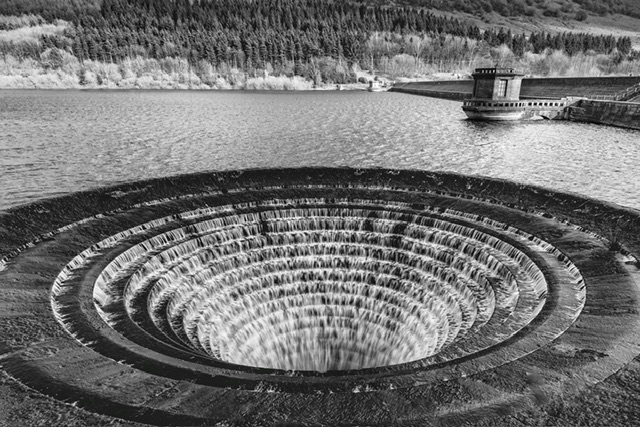
We captured our images here, then packed up to get back to the car park, have a drink and snack then head out of the peaks to the power station, and then home.
Ratcliffe on Soar Power Station
Pat had suggested early on in the planning for this trip a visit to this location near Derby. He had photographed her before but said he had rushed and not captured as good an image as he would’ve liked.
I was thrilled to get the opportunity as never photographed something like this before, so it was interesting. Also, in the not to distant future, these towers will be demolished.
I keep thinking of this place as chimneys but they are actually cooling towers with one tall chimney stack.
About the Power Station at Ratcliff-on-Soar
Ratcliffe-on-Soar Power Station is a coal-fired power station owned and operated by Uniper at Ratcliffe-on-Soar in Nottinghamshire, England. Commissioned in 1968 by the Central Electricity Generating Board, the station has a capacity of 2,000 MW. It is the last remaining operational coal-fired power station in the UK, and is scheduled to close in September 2024.
Below is what the location looks like on Google Maps:
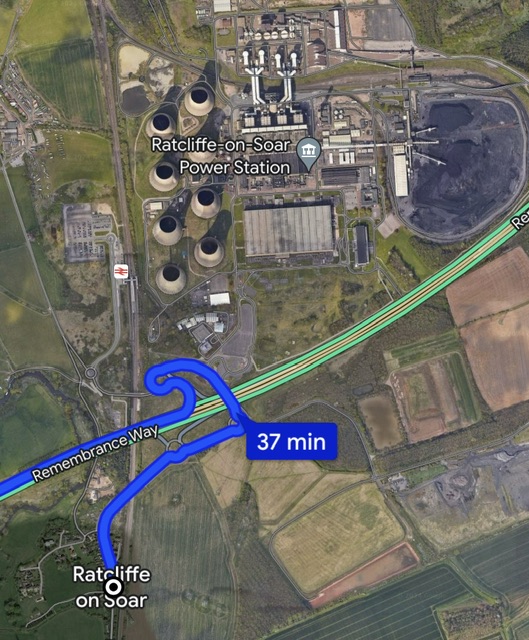
We parked up in a parallel side road lay-by and decided to find our own compositions – I pitched up not far from the car, and began to take shots.
The Shoot
We talked about long exposures not working as movement in the clouds may well merge in with the smoke and steam emerging from the chimney and towers respectively.
I did drift into slow exposures but soon realised and after chatting more about it, we agreed a faster shutter would be fine – on experimenting with different shutter speeds, I realised it would differentiate between a bellowing-style emersion and a flame-thrower style look.
The shot below was taken a little further down the side road and I hadn’t really noticed until Pat pointed it out, that the tree on the right seems to nicely fit in the gap.
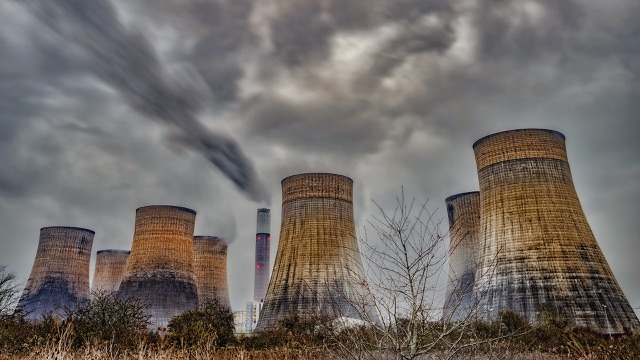
I have a few of these shots and have also had a go at a mono/cropped version below:
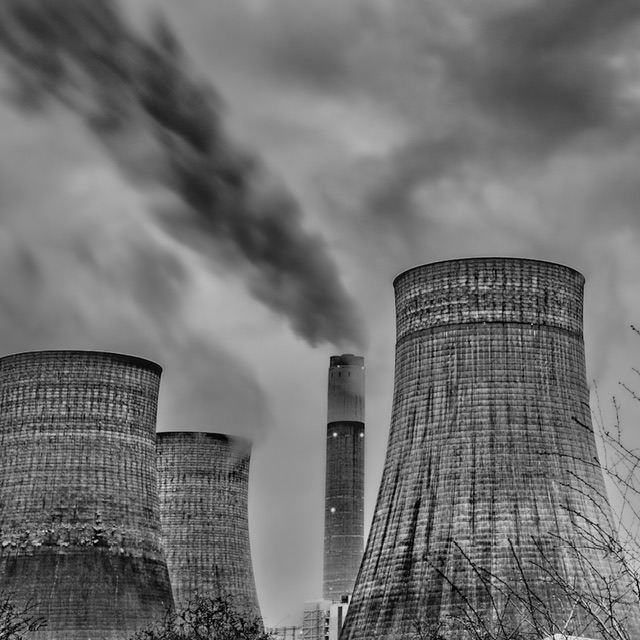
Reflections
Wow, just wow.
This trip had been a special one.
Pat and I had enjoyed each other’s company, got to know each other much better, and really enjoyed pushing ourselves to make the most of the time we had in the Peak District.
We had targeted six locations but did seven, learnt a lot, and had captured some really good quality images.
Pat helped me learn more about use of a polariser and compositions, and I gave him some tips on exposures for running water shots.
If this is what being a ‘social photographer’ means, I’m happy to be one, and remain as one!
I’ve since thought that I’d love to do more trips like this, but only a lottery win, or further advancing years to retirement will trigger that for the moment.
We have pledged to return, perhaps in the Autumn when the the colours at that time of the year will be a big pull for us.
Until the next trip.
Onwards and upwards…